Best Microsoft SharePoint Alternatives and Competitors in 2026
Microsoft SharePoint is a massively popular company intranet platform and document management system. It boasts more than 190 million users across 200,000 organizations all over the world. So why would one be looking for SharePoint alternatives?
For the management at many Microsoft-powered companies, adopting SharePoint is a no-brainer. It's an extremely powerful piece of software that always checks nearly every feature on their list of requirements. It offers this feature! And this feature too! And this! That's everything we could ever need and more!
The actual end-users often paint a different picture. In a blog post eloquently titled "Why I Hate SharePoint", one user summed it up: "In Mexico, there exist massive sinkholes, hundreds of meters wide and deep, caused by erosion. It would be easier to retrieve your document from such a place than from the SharePoint document management system."
Why you may need an alternative to SharePoint
It's true that SharePoint is more feature-packed than most of its competitors, but there also lies the source of many frustrations among its users. While it may be a good fit for some companies, many find it to be too over-engineered to be used effectively:
The learning curve is extremely steep, even for experienced users (source)
The editing and publishing experience is slow and complex (source)
The search feature doesn't always live up to expectations and makes it hard to find the docs you need (source)
The syncing and version management features are unreliable, occasionally leading to lost content (source)
The interface is dated and unintuitive (source)
Does that sound familiar? Then it might be time to switch to a more user-friendly and fast alternative to SharePoint – fortunately, there are many great options to choose from.
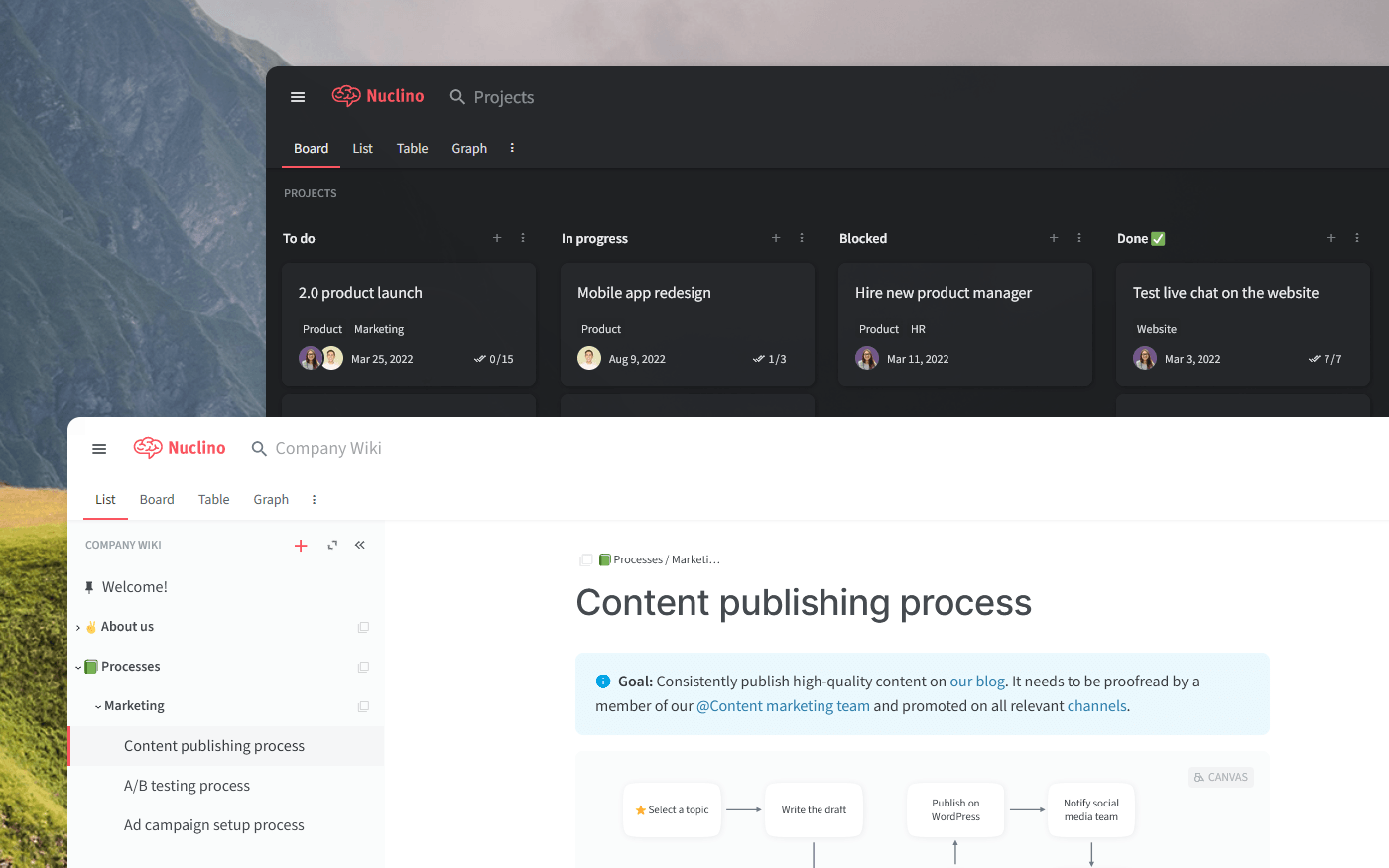
Top 8 SharePoint alternatives
To make your decision easier, we've put together a list of the 5 best SharePoint competitors and alternatives, based on real reviews. Check them out below and find the one that best suits your team's needs.
1. Nuclino

Pricing: Free, advanced features starting from $6/user/month
Rating on Capterra: 4.7/5
One of the main reasons why employees don't engage with company intranet portals like SharePoint is that they are always outdated, clunky, and unexciting. Not Nuclino.
Nuclino is an exceptionally lightweight and fast alternative to SharePoint. While not as feature-packed as SharePoint, Nuclino focuses on the essential features, such as search, navigation, and editing experience, minimizing the learning curve for new users.
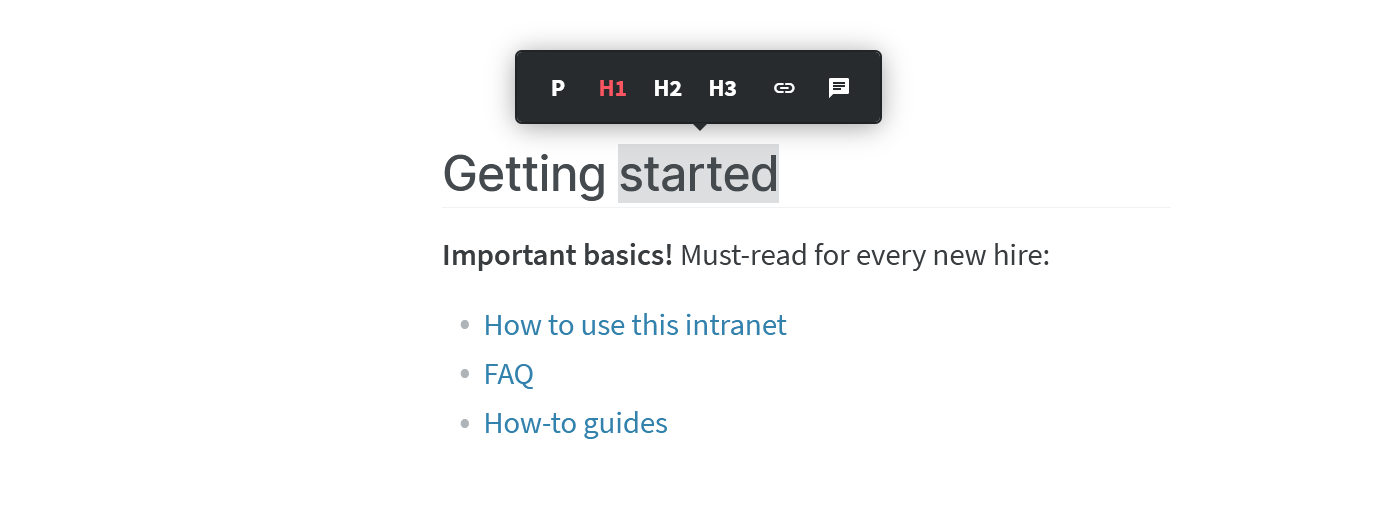
Nuclino is designed to make the process of writing, organizing, and collaborating on documents as frictionless as possible. Every document can be edited by multiple users in real time, with every change automatically preserved in the version history. Comments and mentions make it easy to exchange feedback asynchronously, without stepping on each other's toes.
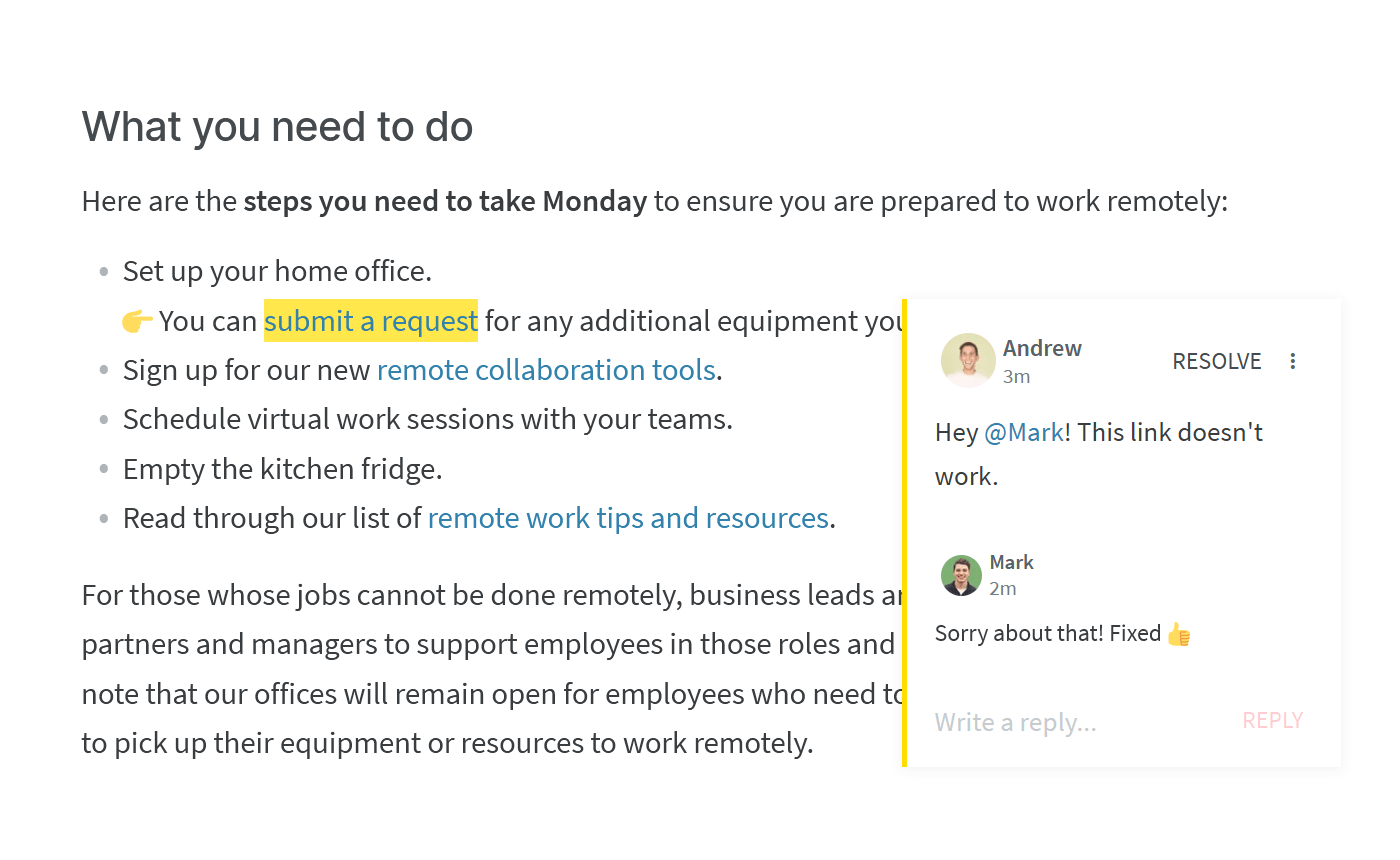
Instead of relying on the traditional folder system, where important documents can easily get lost, Nuclino allows you to link related pages together. Simply type "@" and the name of the page you'd like to link to.
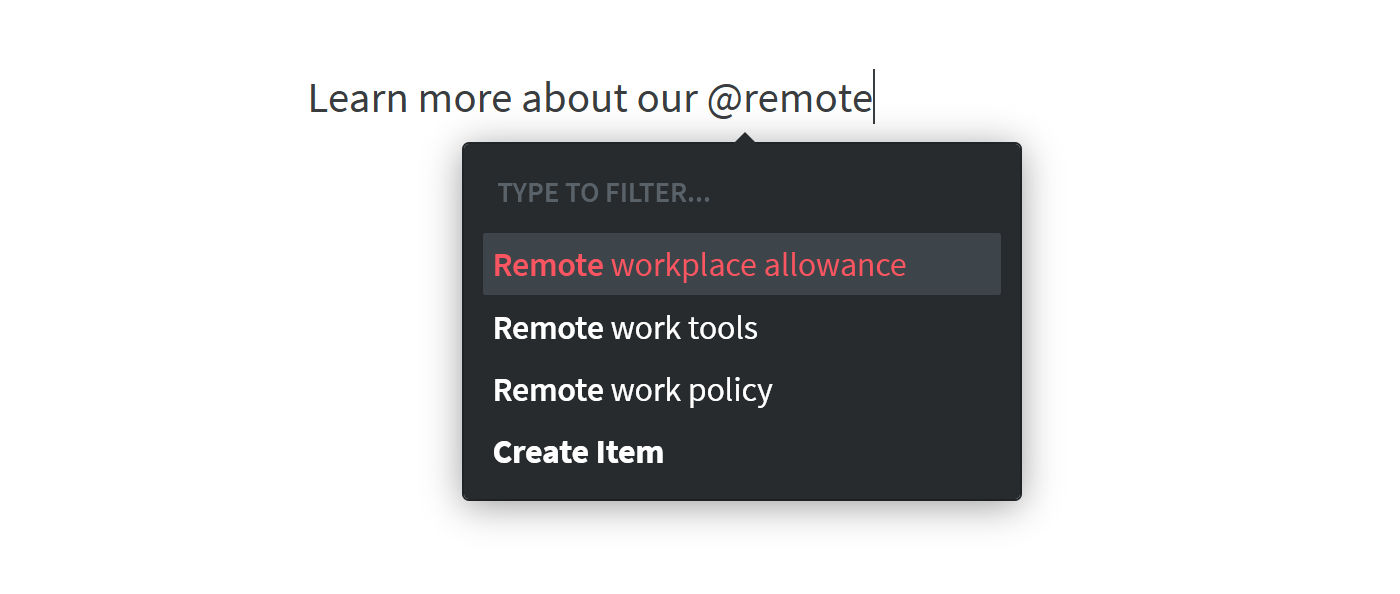
You can also turn any Nuclino workspace into a public website, accessible to anyone on the web and discoverable via search engines. It's perfect for help centers, user documentation, changelogs, and much more.

It's worth noting that Nuclino can replace more than SharePoint. It's a unified workspace that brings all your team's knowledge, docs, and projects together in one place — like a collective brain. You can manage projects, onboard new employees, take meeting minutes, collaborate on documents, and more, without the chaos of files and folders, context switching, or silos.
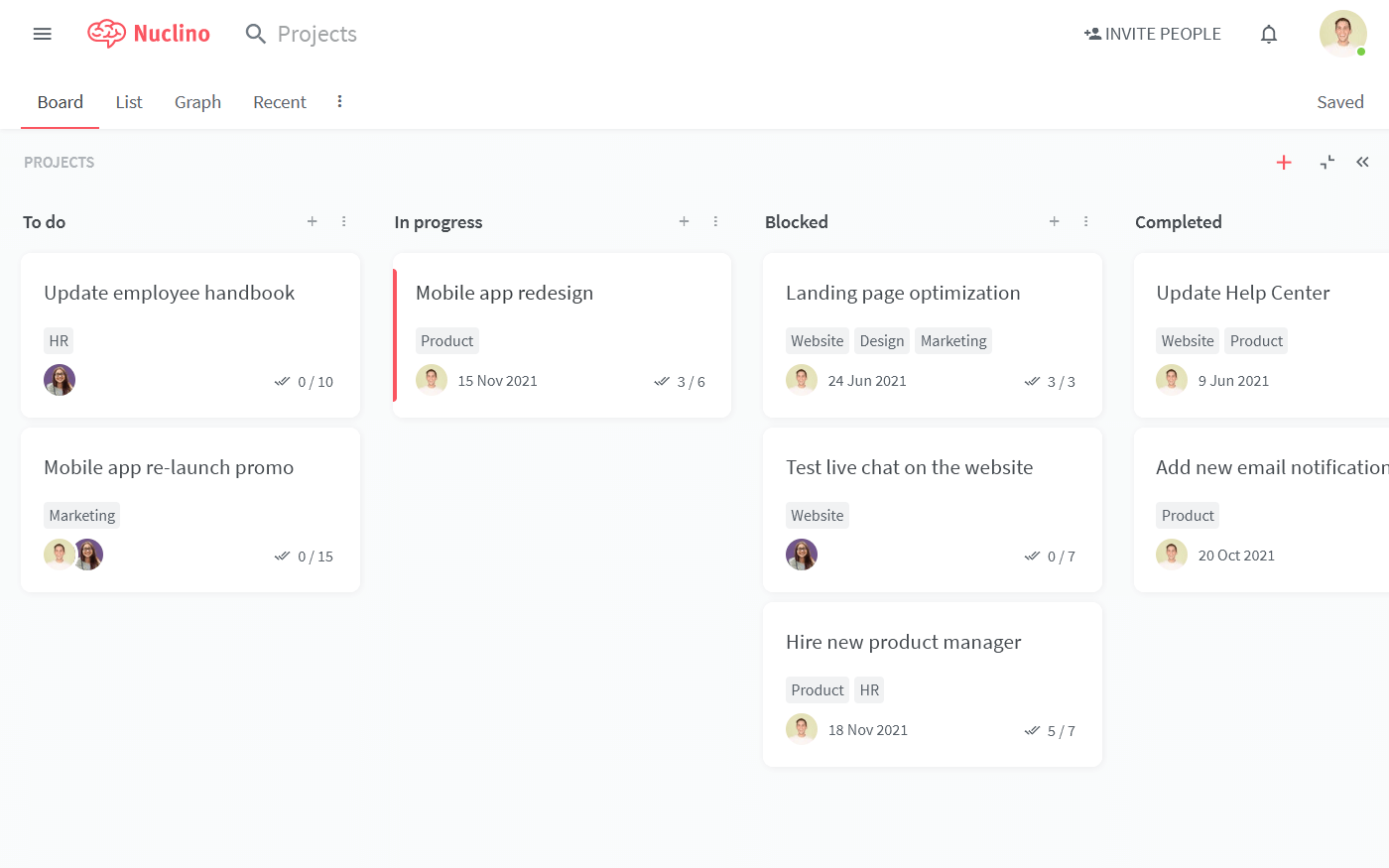
If you are looking for a user-friendly, fast, and intuitive SharePoint alternative, Nuclino could be a great choice. Follow this guide to learn how to set up your company intranet using Nuclino.
What users say about Nuclino:
"I had never used a product like Nuclino until joining my current startup, and I've been really impressed with it. It's super easy to use and edit and it looks clean. It's been an essential tool for me as I've built out all of the documentation for my department."
— Capterra review (read more reviews of Nuclino)
2. Confluence
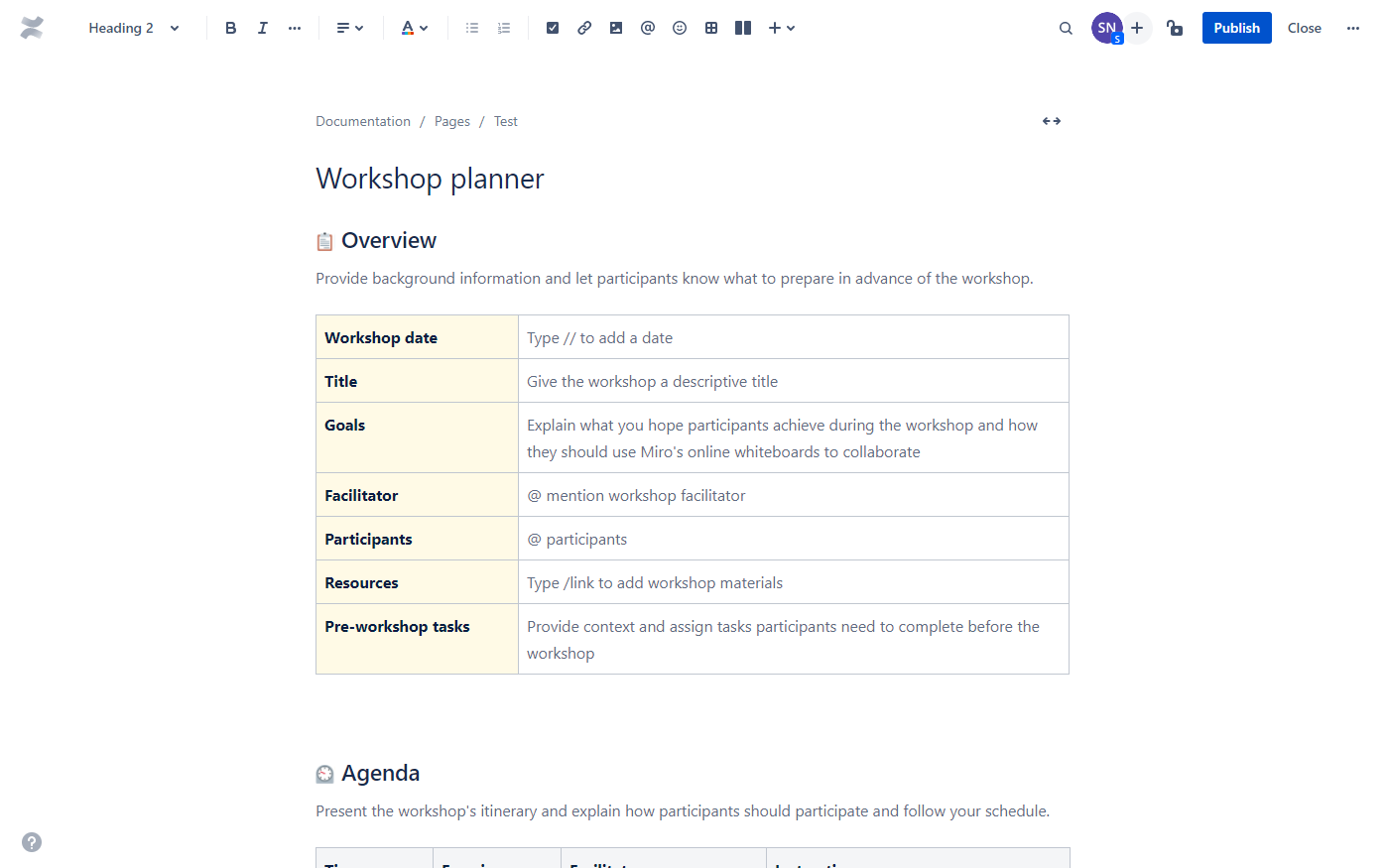
Pricing: Free, advanced features starting from $5/user/month
Rating on Capterra: 4.4/5
Any list of Microsoft SharePoint alternatives would be incomplete without Atlassian Confluence. It's one of the oldest document management platforms and software documentation tools on the market with over 60,000 customers worldwide.
The feature set of Confluence largely overlaps with that of SharePoint, but it comes in a much more user-friendly package and works "out of the box". An additional benefit is its seamless integration with other products in the Atlassian suite. If you are already using other Atlassian tools, such as Jira or Bitbucket, Confluence is likely to easily fit into your workflow.
On the other hand, it's worth noting that while Confluence is not as complex and over-engineered as SharePoint, it still comes with a certain learning curve. But if you are looking for a SharePoint alternative with advanced customization options and enterprise-level features, this may be a reasonable trade-off.
Learn more about how Confluence compares to SharePoint: Confluence vs SharePoint.
Looking for more tools similar to Confluence? Check out this list of Confluence alternatives.
What users say about Confluence:
"With Confluence, we have an environment that is very efficient to work in to add new content, very easy to update articles and manage file attachments. I have used other systems in the past, notably MediaWiki and SharePoint, and while I enjoyed them at the time, Confluence blows everything else out of the water."
3. Quip
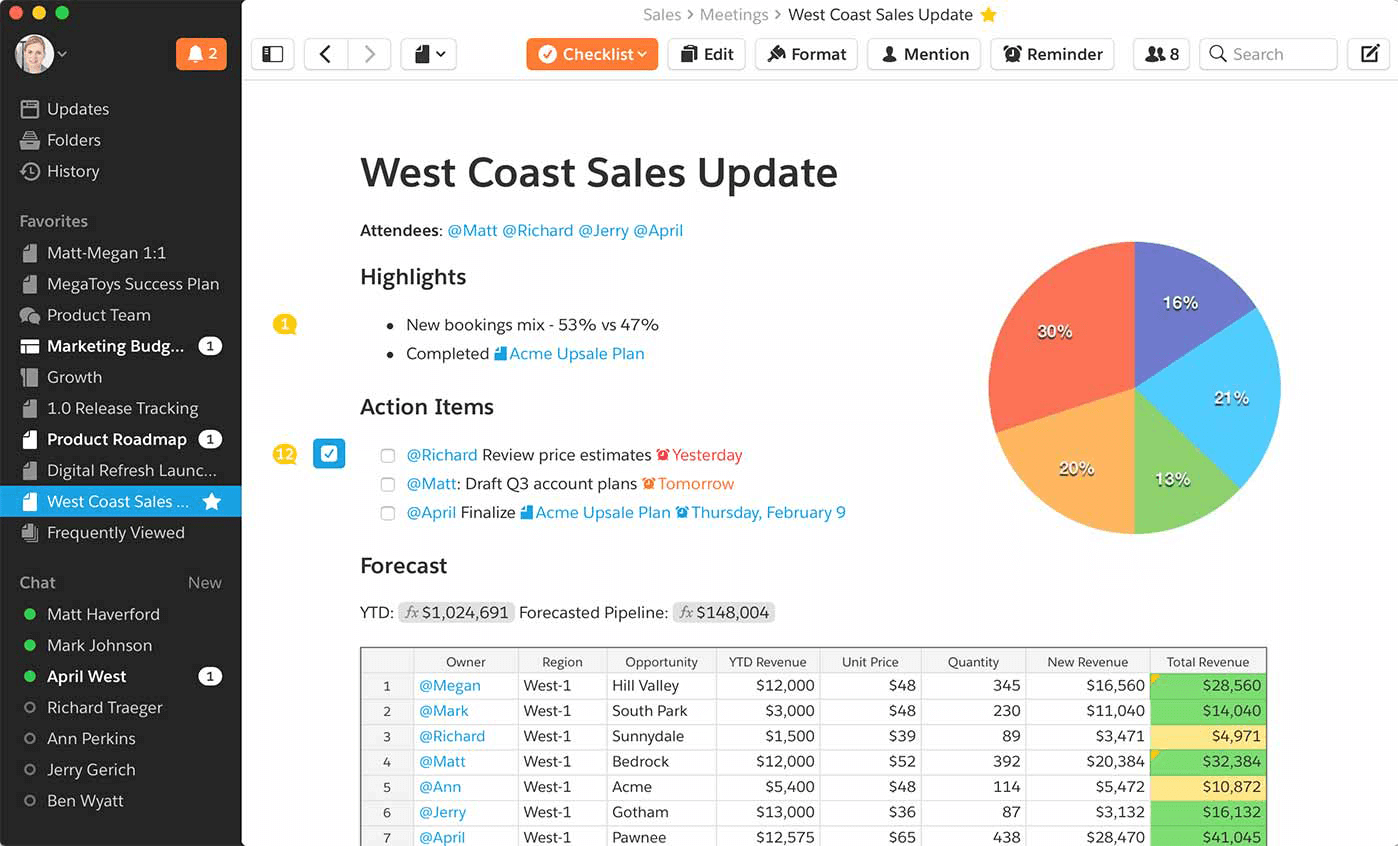
Pricing: Starting from $10/user/month
Rating on Capterra: 4.4/5
Quip is more than an intranet platform – it's an all-in-one collaboration software that combines documents, spreadsheets, checklists, presentation slides, and chat in one tool. It is owned by Salesforce and truly shines when used in combination with the Salesforce CRM.
Quip is mainly geared towards large enterprises and is more expensive than other alternatives on our list. However, since it can replace not only SharePoint but also Google Drive, Slack, and other online collaboration tools, it may save costs in the long run.
What users say about Quip:
"Quip has managed to stand out in this heavily competitive field of online collaboration. Quip UI is really smooth and feels new! Perhaps one point was, it takes significant time for a new guy to get up to speed with the tool and understand all the intricate details."
4. Papyrs
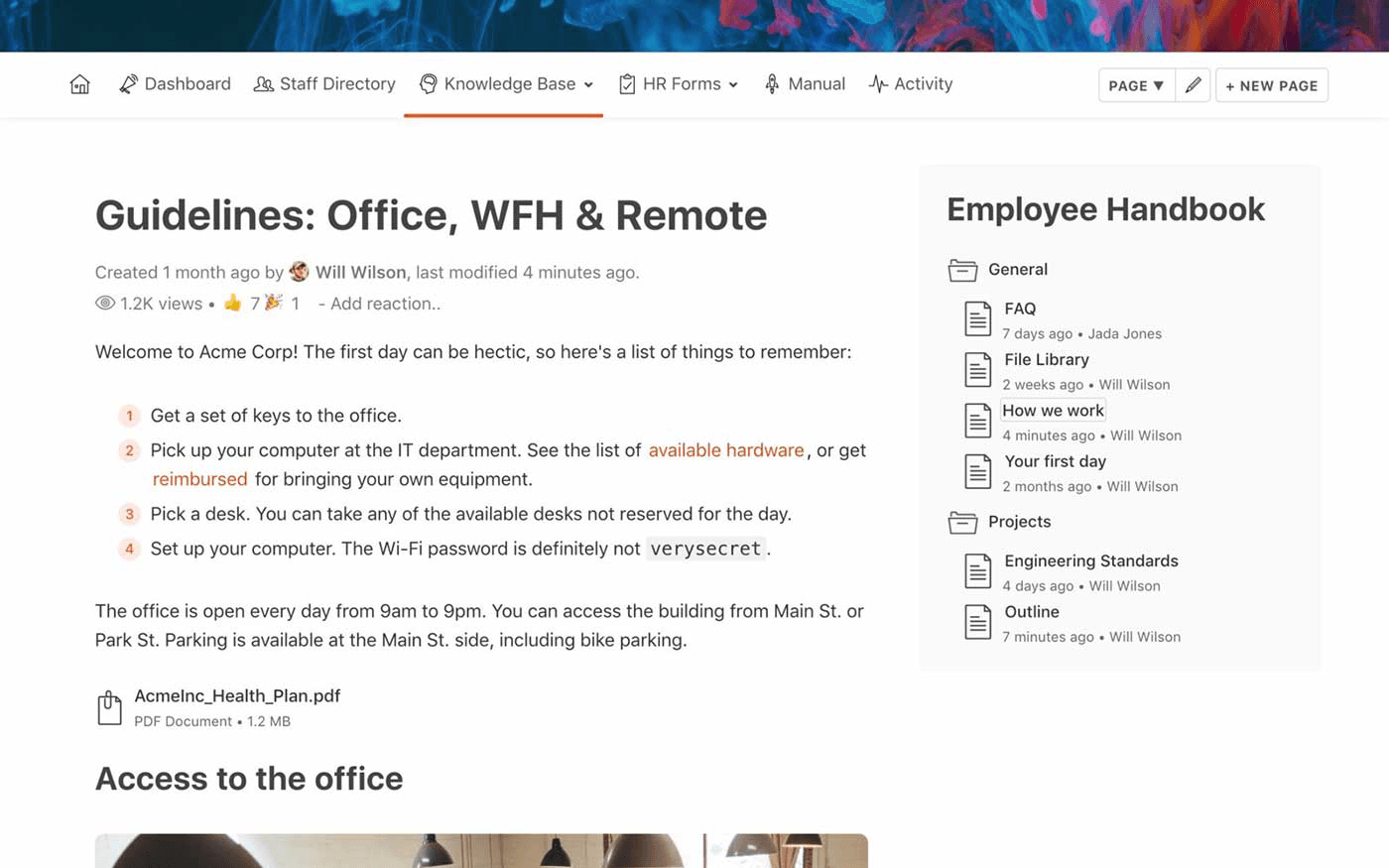
Pricing: Free, advanced features starting from $89/month
Rating on Capterra: 5/5
In terms of pure feature count, Papyrs is not as powerful as SharePoint. But depending on your needs and requirements, it may be a good thing. By doing away with the rarely used features and menus, Papyrs is able to offer a much more user-friendly and intuitive interface and a lower learning curve. Overall, it is purposefully designed to be a modern and lightweight alternative to SharePoint.
Papyrs is a fairly general-purpose tool that allows you to set up your internal or external knowledge base, create an intranet portal for your team, collaborate on tasks and projects, and much more.
The cheapest pricing plan of Papyrs starts at $89 per month, making it a fairly expensive option if you are a small team. Large companies, however, can take advantage of the "Company Intranet" plan that charges a flat $899 fee per month, regardless of how many users you add.
What users say about Papyrs:
"Creating a wiki site was super easy with this intuitive program. Although for our needs some of the features are a bit too rich, the overall product is much more user-friendly than our last intranet site, and it's much more appealing to our company users as well."
— Maura V. (Capterra)
5. Basecamp
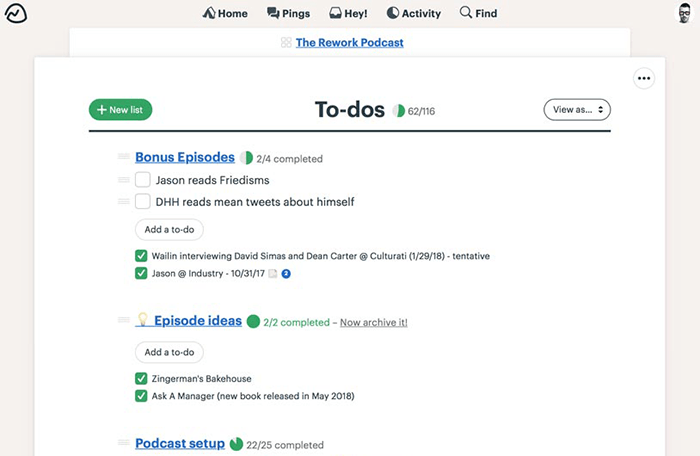
Pricing: $15/user/month or $299/month for unlimited users
Rating on Capterra: 4.3/5
Like Quip, Basecamp is an all-in-one collaboration tool. It has everything you may need to get things done and keep all stakeholders on the same page – message boards, to-do lists, calendars, documents, file storage, real-time group chat, and automatic check-in questions.
Basecamp essentially lets your entire team rally around a single app for all day-to-day work. While its feature set is quite extensive, the learning curve is not as steep as you may expect. It can serve as a great SharePoint alternative for any organization, but it's been particularly popular as a remote collaboration tool among distributed teams.
If you like the idea of consolidating all work in one place and reducing the number of tools you use – Basecamp can be a great option for you.
Looking for more tools similar to Basecamp? Check out this list of Basecamp alternatives.
What users say about Basecamp:
"The design of the platform is clean, easy to navigate and work in. The other big thing I love about Basecamp is that all your communication tools are in one place, so no need to have Slack, and email, and project management software."
6. Google Workspace
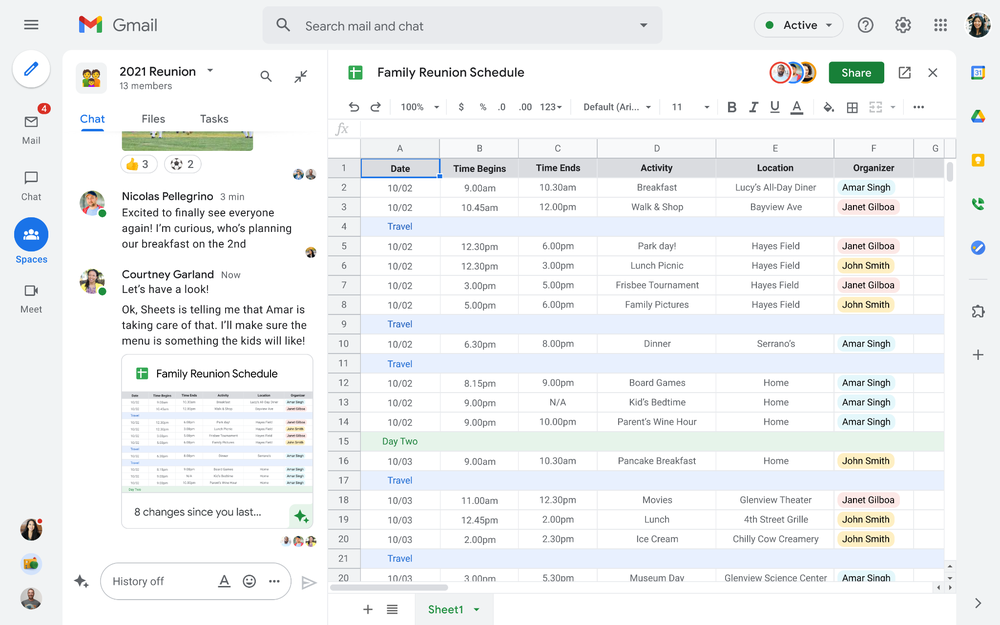
Pricing: Free, advanced features starting from $6/user/month
Rating on Capterra: 4.7/5
Google Workspace is a cloud-based productivity suite developed by Google that offers a range of collaborative tools for businesses and individuals. It includes applications like Gmail for email, Google Drive for file storage, Google Docs for word processing, Google Sheets for spreadsheets, Google Slides for presentations, and more.
While Google Workspace and SharePoint share some core functionalities, there are notable differences. Google Workspace places a strong focus on real-time collaboration and simplicity. Multiple users can work on the same document simultaneously, and changes are automatically saved as they are made. SharePoint's collaboration features tend to be more structured, with workflows and approval processes that are often used in larger organizations.
Given the widespread popularity of apps like Gmail and Google Docs, your team may appreciate the familiar feel of Google Workspace and get the hang of it fairly easily.
What users say about Google Workspace:
"While MS Office and Sharepoint administrators will swear that Sharepoint is the only way to collaborate, the truth is, it sucks. What a horrible platform. We used Google Drive to collaborate and it was much easier to get individuals to work on, tell who was editing, and administer logins, rights, etc."
7. Dropbox

Pricing: Free, advanced features starting from $9.99/user/month
Rating on Capterra: 4.5/5
Dropbox is a cloud-based file storage and collaboration platform that allows users to store, share, and sync files across devices. It's often considered a simpler alternative to SharePoint, and is better suited for small to medium-sized teams due to its straightforward nature and limited complexity.
Dropbox enables real-time collaboration on files, similar to SharePoint. Multiple users can work on the same document simultaneously, with changes automatically saved and synced in real time. Dropbox Paper, a free tool offered by Dropbox, offers a basic collaborative workspace for creating and editing documents, allowing users to contribute and provide feedback.
What users say about Dropbox:
"Sharepoint is inefficient for our needs and tends to be confusing for users when it comes to things like checking out files. Although Dropbox doesn't have the same editing capabilities as the alternatives, this is preferable to us in terms of pure file storage, access, and sharing capacity. I've been overall very happy using Dropbox Business. I like that it syncs so well across devices. The majority of the time it is easy to locate all the files that we need, simple to share documents, and it integrates well with our encryption software."
8. Box
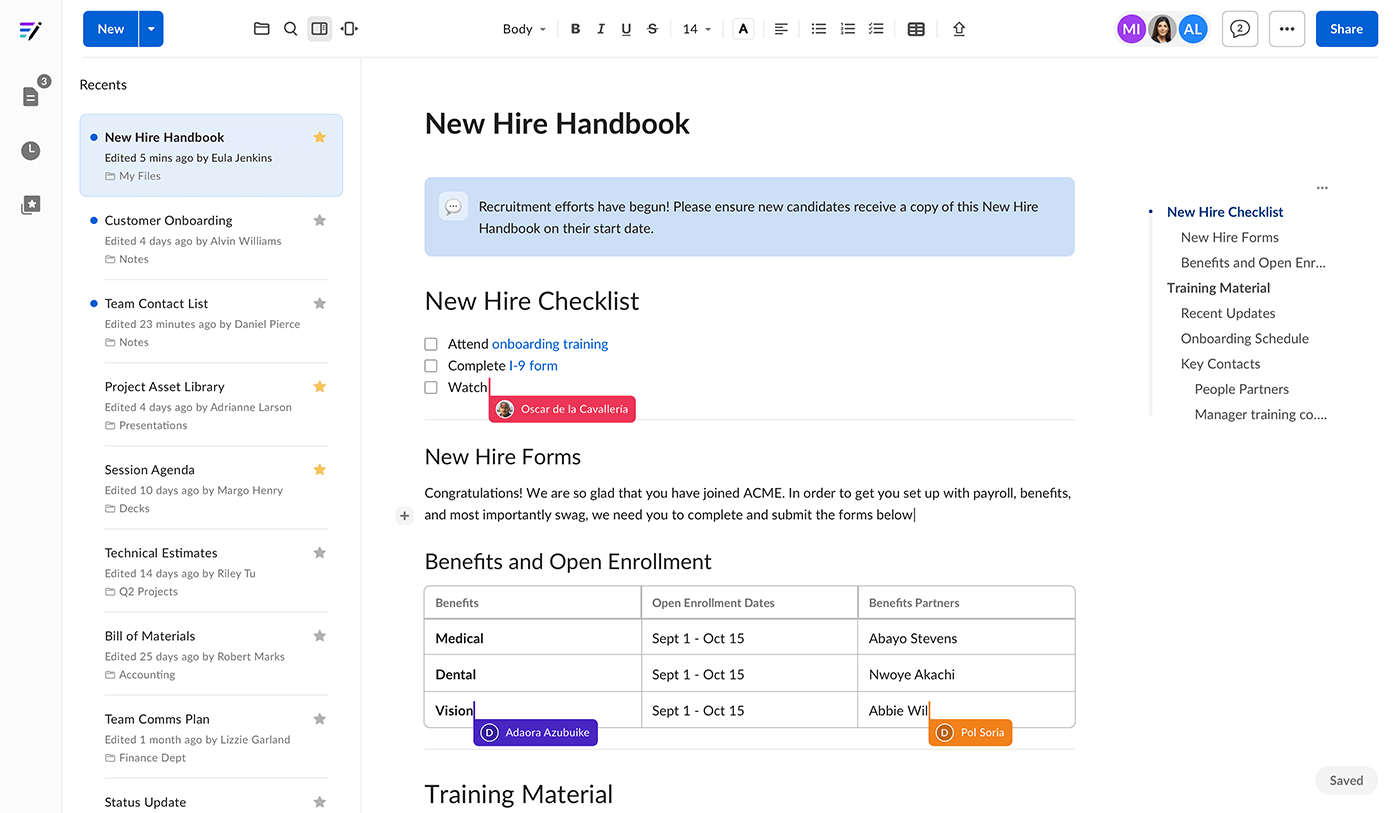
Pricing: Free, advanced features starting from $5/user/month
Rating on Capterra: 4.4/5
Box is a cloud-based content management and collaboration platform that can serve as a SharePoint replacement. Both Box and SharePoint allow users to store and share files, but Box focuses on simplicity and ease of use. It's designed to be intuitive, making it easier for users to upload, organize, and share files without a steep learning curve. This is in contrast to SharePoint, which can sometimes be more complex to navigate and configure.
While SharePoint offers more robust customization options, allowing organizations to create tailored solutions, Box is more straightforward and may be preferred for those seeking a quicker setup.
What users say about Box:
"SharePoint wasn't liked by most employees. Too difficult to understand and use. Box is able to integrate with most of Microsoft tools and more. No downtime experienced. Constantly improving the look and feel, and the navigation."
How to choose a SharePoint alternative
When searching for an alternative to SharePoint, a deliberate and informed decision is crucial to finding a platform that seamlessly fits your organization's needs. Below are essential criteria to consider when evaluating potential alternatives:
Features: Look for alternatives that offer the specific features you need, like document management, collaboration tools, version control, and so on. But remember that feature count isn't everything.
Ease of use: Opt for a platform with a user-friendly interface and intuitive navigation. It should be easy for your team to adopt without extensive training.
Speed: Test how quickly the platform loads, especially when accessing documents, files, and pages. Slow load times can hinder productivity.
Integrations: Consider SharePoint alternatives that integrate well with your existing tools and software, such as email, CRM, and project management systems.
Cost: Evaluate the total cost of ownership, including licensing fees, maintenance, and potential hidden costs. Choose an alternative that fits your budget.
It's worth noting that the criteria outlined below are by no means one-size-fits-all. Your organization's distinctive needs will shape how you prioritize these factors.
What are the open-source alternatives to SharePoint?
When seeking to replace proprietary software like SharePoint, open-source solutions offer a cost-effective and customizable alternative. Here are some of the most widely used open-source SharePoint alternatives:
Nextcloud: An open-source platform that provides file syncing, sharing, and collaboration tools. It offers features like document editing, calendars, and chat.
OpenKM: A document management system that facilitates collaboration, version control, and workflow automation. It's particularly useful for organizing and accessing documents.
ONLYOFFICE: Combines document management, collaboration, and editing features in a single platform. It supports various document formats and offers real-time editing.
XWiki: A wiki-based platform that supports collaboration, document sharing, and customizable applications.
Keep in mind that open-source SharePoint alternatives might require additional customization and ongoing maintenance, so consider your team's technical capabilities and resources when making a decision.
Find the best SharePoint alternative
SharePoint can be a great solution for some organizations, but there are alternative solutions that may better suit you. Depending on the reason you are looking to switch from SharePoint, different options may fit your requirements better than the others.
And it's not enough to have a list of features and simply pick the tool that ticks the most boxes. To make sure you are making the right choice, it's important to thoroughly evaluate your options together with your team.
We hope this list will save you some time and make the decision a little easier.
Ready to get started?
